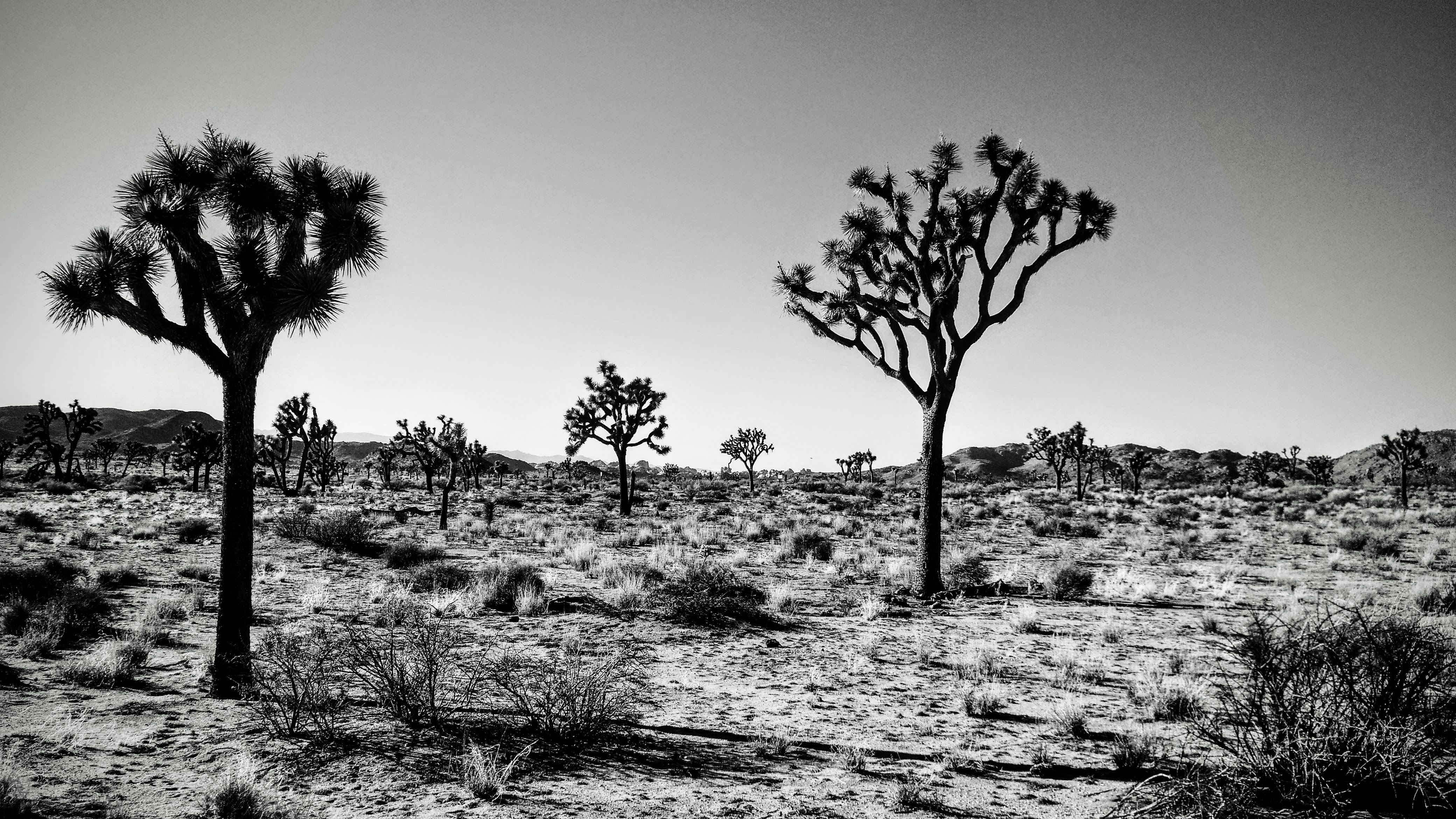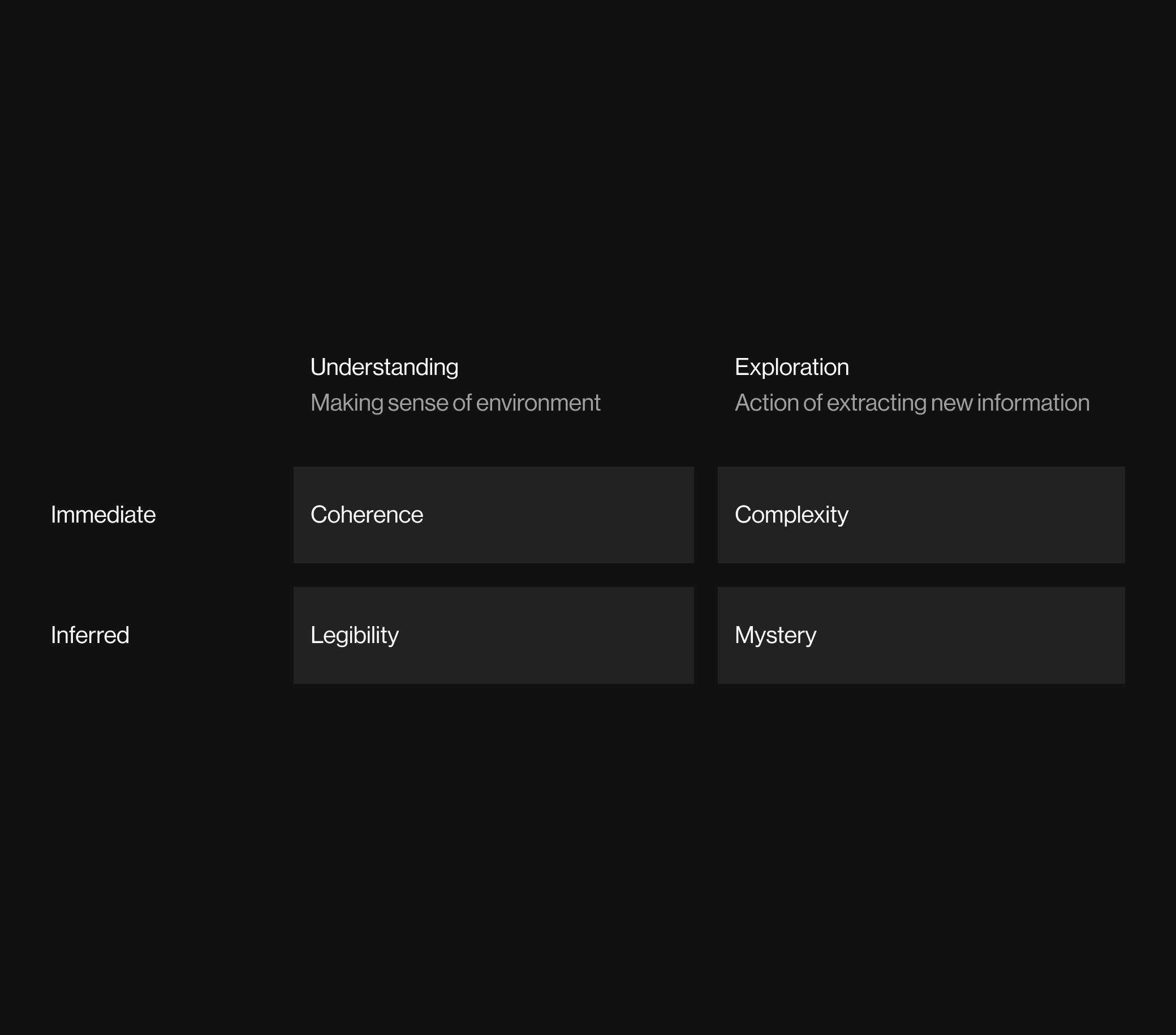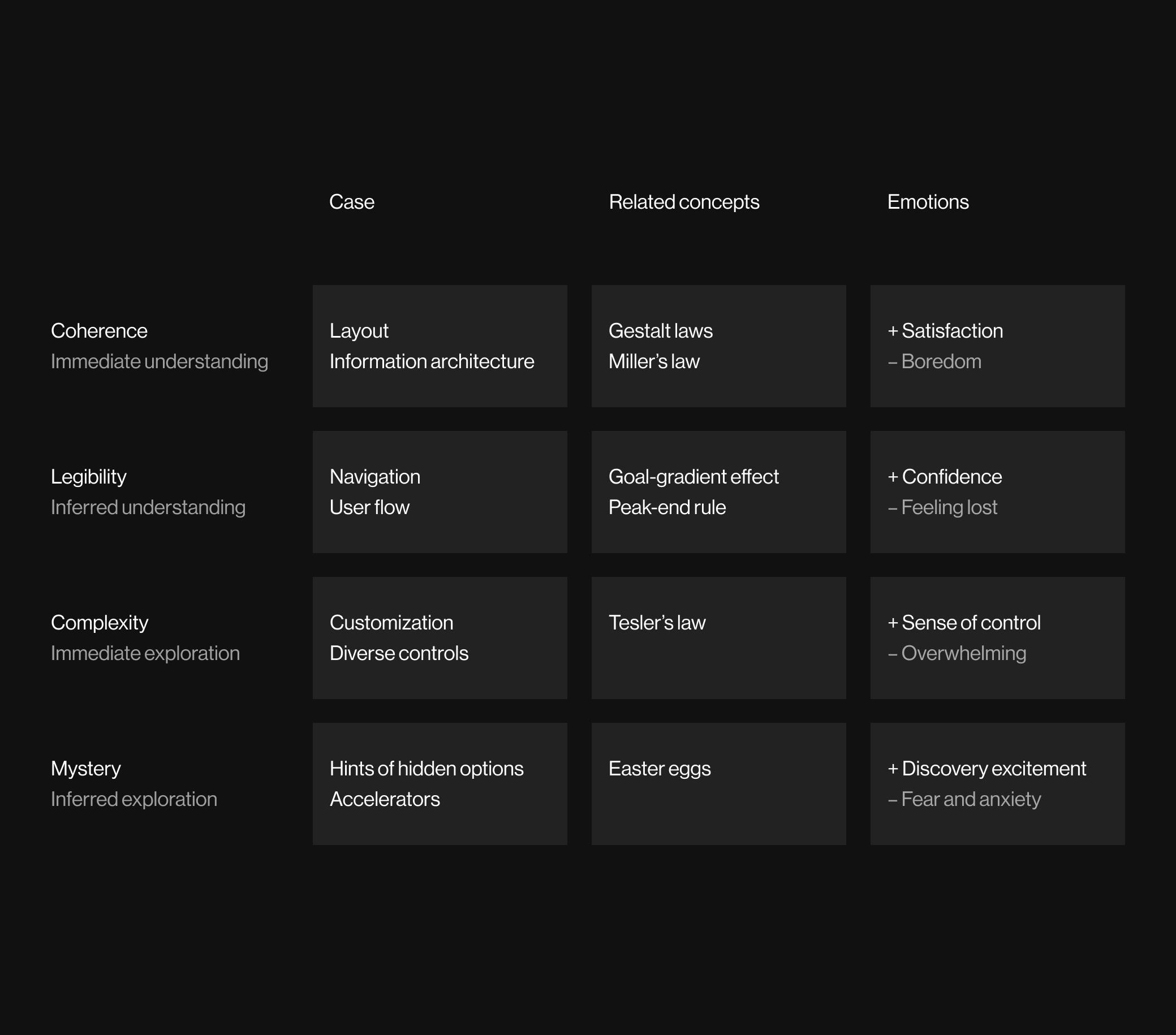
For most of history this has been the main UI for all humans.
The physical environment around us has been the main interface for the most part of humanity: grasslands, forests, mountains, river valleys, deserts. In order to survive and reproduce, humans have evolved to have perceptual tools that allow them to interact with their landscapes efficiently: where to find food, water, shelter, and, as importantly, what to avoid.
According to the work of Environmental psychologists Stephen and Rachel Kaplan:
Humans prefer landscapes that provide the most useful information for their survival
Humans have evolved to instinctively prefer environments that allow them to assess and gather knowledge from their surroundings easily. Seeking and “eating” information is so important to our survival that these characteristics have led us to prefer one environment over others.
These preferences can be developed through two cognitive functions: understanding and exploration.
Understanding is a cognitive function through which humans gather information from their environment in order to make sense of it and create a context in which they can interact with it. With a good understanding of the environment, humans are able to avoid dangers and take advantage of opportunities for food, reproduction, and shelter.
On the other hand, exploration is a cognitive process that involves cultivating an interest in obtaining new information. It is closely related to curiosity and represents a desire to learn something new.
Four predictor variables of preference
The Kaplans realized that understanding and exploration may sometimes occur immediately, but can also require time and inference.
Information that the brain can process without additional effort is considered “immediate”, while “inference” requires additional mental effort and time during the information processing in order to classify elements into certain categories.
By crossing these four dimensions, the Kaplans developed a preference matrix, which forms the core of their landscape preference theory. These four dimensions result in four variables: coherence, legibility, complexity, and mystery.

Preference Matrix
Coherence refers to the immediate understanding of an environment. When an environment is coherent, a person can quickly understand what is present in it and how it looks. These types of environments have a clear order and predictability, with elements that are often repeated in recognizable patterns and structures. This helps a person easily understand the information that is present. Coherence is closely related to the Gestalt laws of visual perception.
Legibility, on the other hand, requires more time and effort to understand and involves movement. While coherence is a passive understanding of a scene, legibility occurs when a person starts moving and perceiving a changing environment. Good legibility provides good orientation and a clear path to move forward and back. If legibility is poor, a person may feel lost and unsafe in the environment. In user experience design, an example of legibility is how users navigate through a site and how user flows are made seamless and comprehensible with actions to go back and undo mistakes. It’s also related to a few heuristics and cognitive effects like Goal-Gradient Effect and Peak-End Rule.
Complex environments are those that allow for immediate exploration due to the large number of diverse elements present. These types of environments motivate exploration because there is so much to discover and learn. In UX design of enterprise and B2B applications we often deal with complex interfaces that cannot be reduced, but which are also preferred by users because they offer more control and flexibility. One of the cognitive effects related to this is Tesler’s law.
Mysterious environments, on the other hand, require additional effort to explore as they contain hidden information. These environments have various elements with hidden information that must be collected and connected. Mysterious environments can be challenging, but they can also be exciting and engaging as people try to uncover hidden information and piece it all together. Although hidden information and functionality on the UI can be dangerous, it can also provide a positive experience if there are hints, indicators, tooltips, Easter eggs and “white rabbits” on the UI that invite users to discover new functionalities. If it does not have negative consequences, a mysterious user journey can provide a positive experience if it ultimately reveals something new to the user.

The environment with a clear legible path and engaging complex foliage that adds mystery. It strikes a good balance of being legible and involving. (Source)
New virtual environments, same mental models
The dawn of digital interfaces and the Internet shifted our places of being from the physical environment to a virtual one. We spend more time looking at the screens of computers and phones than we do looking at nature. Rightly or wrongly, we rely more on digital interfaces to live our lives than natural landscapes. The user interface of computers has become a main part of our societal environment, but we use the same perceptual tools that our ancestors developed over millions of years.
Evolution has shaped our visual perception to prefer certain landscapes, and these preferences can be applied to the new virtual 2D landscapes we encounter on screens.
User interface perception shares the same mental model from landscape perception
Some cognitive scientists like Donald Hoffman argue that our reality is actually an user interface and we don’t see the true reality any more than we see the processes in the transistors and chips in our computers.
When we interact with a computer’s user interface, we use the same cognitive functions as when we interact with natural landscapes. We try to understand the information the UI provides and make sense of it, and we also take action on the environment and explore it.
There is a feedback loop between these two functions, as exploration leads to a change in the environment that prompts the process of understanding in our minds, and once we understand it, we take action and explore the next state of the environment.
An evaluation framework based on our landscape perception
The landscape theory of environment preference can be applied to evaluate user interfaces and understand how users perceive them. By considering the four variables of coherence, legibility, complexity, and mystery, we can understand why users prefer certain UI elements or design approaches.
This can inform the development of a framework for evaluative UX research and usability studies and help us understand how users process and understand the information presented in an interface.

UI preference framework.
By analyzing how users perceive and navigate an interface, we can determine whether they are able to understand the information presented to them immediately or if they need more time to process it.
We can also assess whether they are able to easily navigate and orient themselves within the interface, or if they experience fear and uncertainty. Understanding these factors can help us design more effective and user-friendly interfaces.
The current practice we have in UX design is aligned with understanding, as we want to create intuitive, frictionless designs so users don’t get confused and feel lost.
In addition to understanding how users perceive and understand an interface, we can also research how they interact with it and explore it. We can determine whether they are able to immediately take action and explore the interface, or if they become stuck and try to uncover hidden elements. However, there are also products with mysterious characteristics, like ChatGPT, that require users to explore and uncover hidden features, creating a sense of amazement and excitement.
We can also analyze the complexity of the interface and consider whether it is effective or not. It’s important to note that complexity does not necessarily mean a bad design. Complexity can provide more control and flexibility for users to perform tasks in different ways in the same way that a complex environment can provide different sources of food and security.
A complex interface may offer a range of options and features, allowing users to approach a task in a way that best suits their needs and preferences. This can be beneficial as it allows for greater customization and adaptability. On the visual side, complexity can provide a richer aesthetic and remove the potential boredom we might experience with simpler user interfaces.
It’s worth considering how exploration can positively impact user experience. While we have mostly focused on the understanding side, our users may need an adventure of discovery. There are good reasons why open-world games are so popular and why there are many players who spend their time hunting for Easter eggs. If we craft it carefully, even on the web and mobile apps we can have a positive experience of exploration, otherwise our users will feel lost, unsafe, and overwhelmed. It is important to strike a balance and consider the context and goals of the product when deciding on the appropriate design approach.
The world is ever-changing, our cognition remains the same
Landscape theory can help us understand how people prefer certain environments in nature and why. The reasons for this lie in the theory of evolution, because we have evolved to prefer those environments that provide us with the necessary information for survival and reproduction.
Today we live in a technological civilization, but we still have the same cognitive functions of understanding and exploration that our ancestors had, and these cognitive functions influence which user interface we will prefer.
Therefore, using the landscape theory of Stephen and Rachel Kaplan, we can analyze and explore the preferences our users have regarding design. A new preference framework can be built on this in further user experience research.
Works Cited
- Landscape theory by Stephen and Rachel Kaplan
- Why do we prefer one environment over another? By Georjeanna Wilson-Doenges
- Laws of UX by Jon Yablonski
- Easter eggs, little delights in UI/UX design by Eleana Gkogka
- Why Open-World Games Tend to Be So Popular by Allison Stalberg
- The power of Easter Eggs in tech by Silvia Venditti
- Measuring the Intangible. Usability Metrics by Masha Panchenko
- Usability Metrics by Jakob Nielsen
- Design for Coherence, not Consistency by Carlos Yllobre
- Controls are Choices by Dan Saffer
- Accelerators Allow Experts to Increase Efficiency by Aurora Harley
- Case against reality by Donald Hoffman